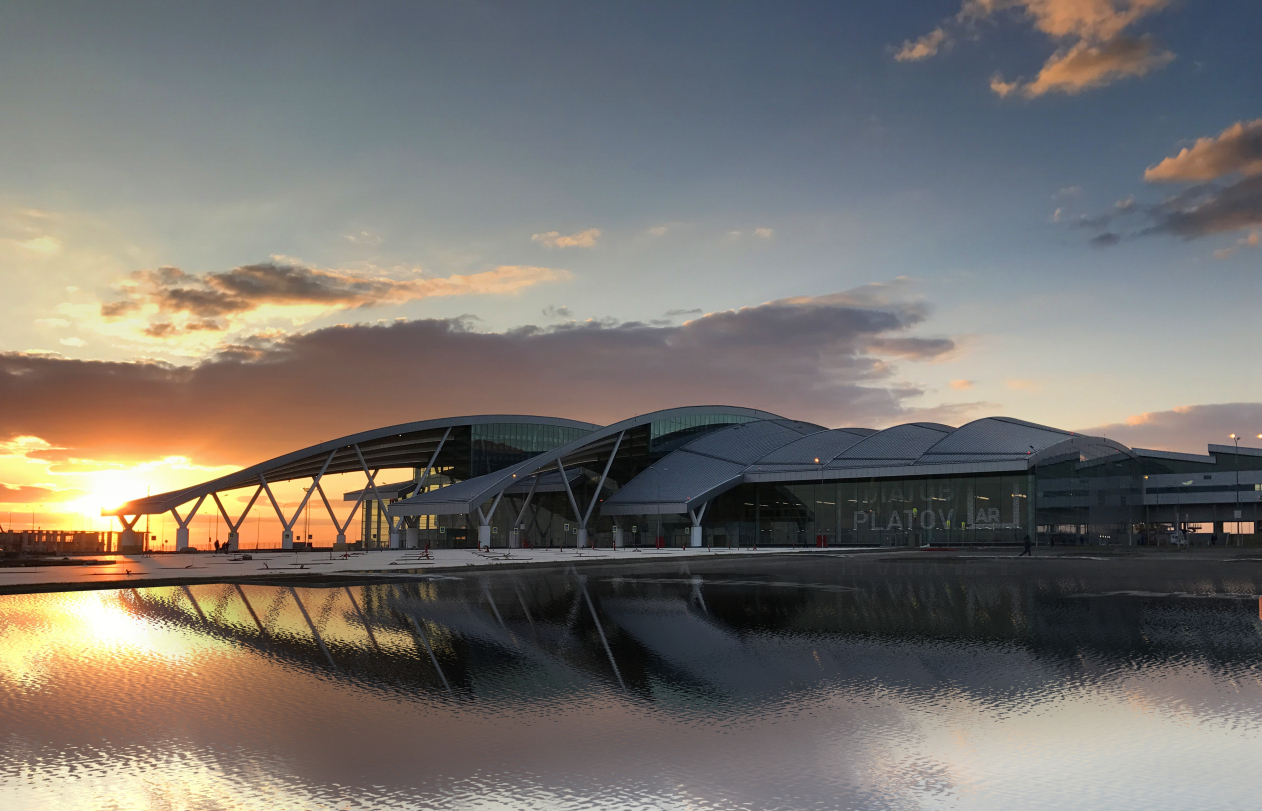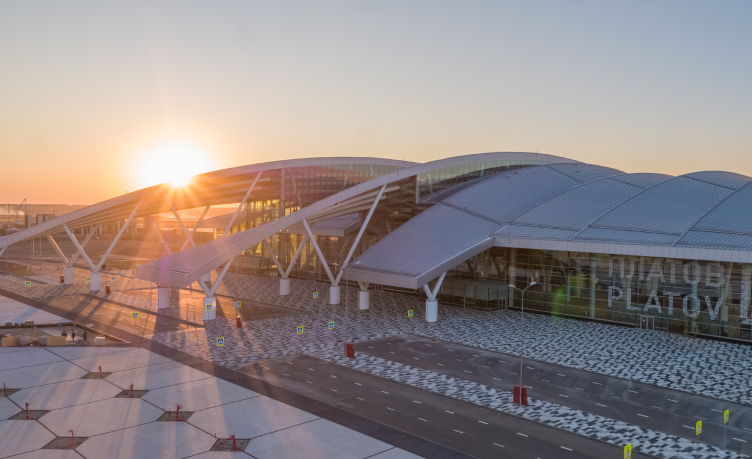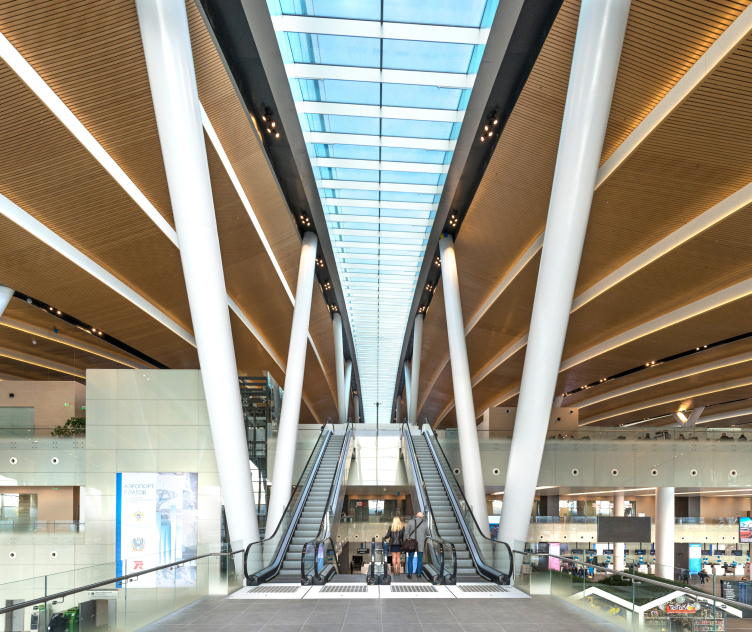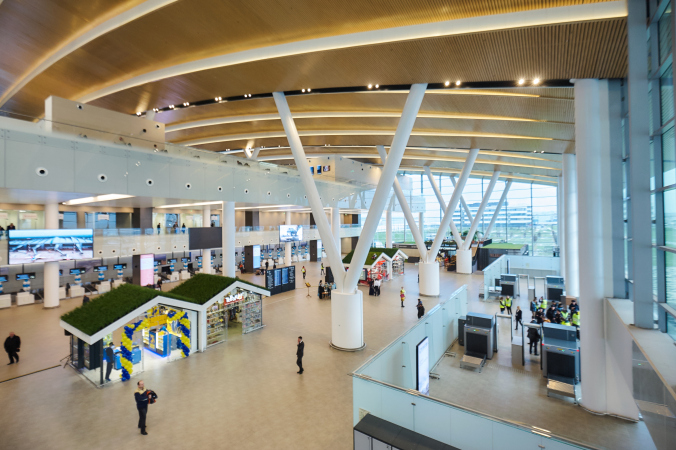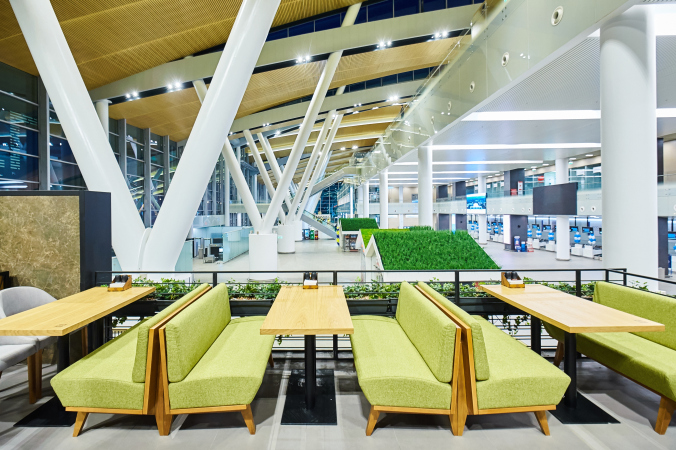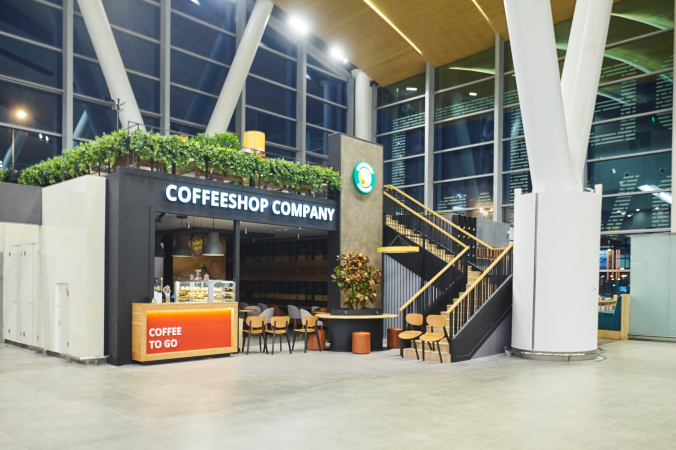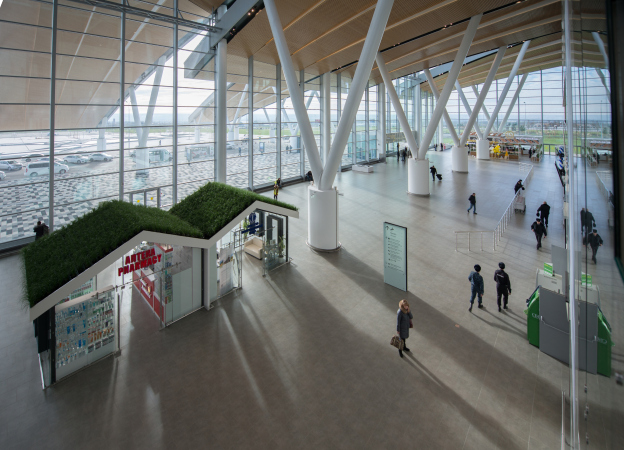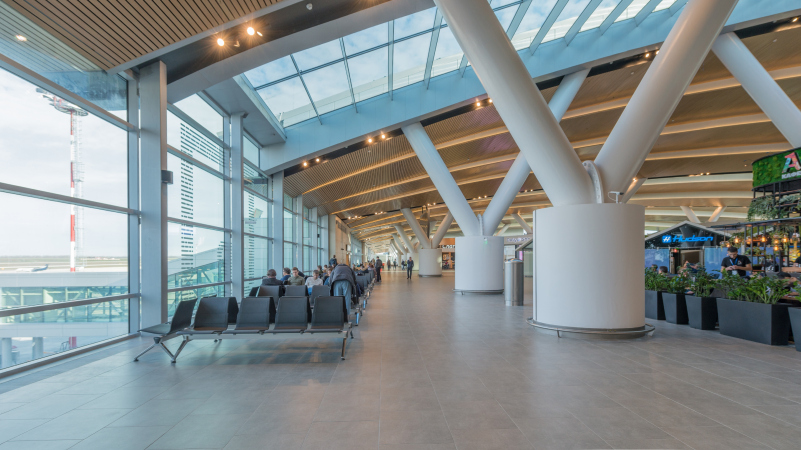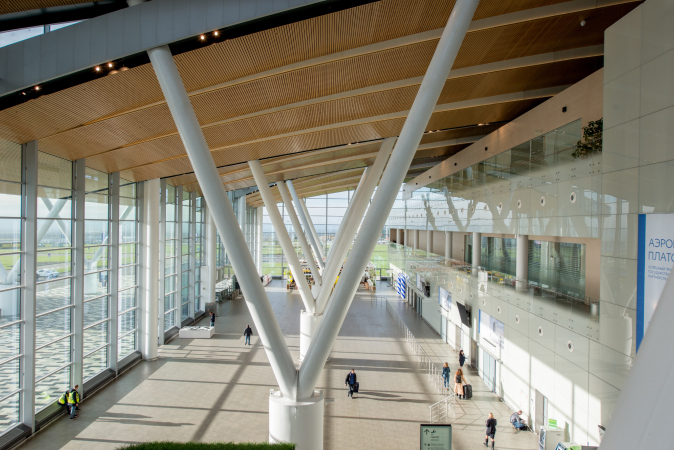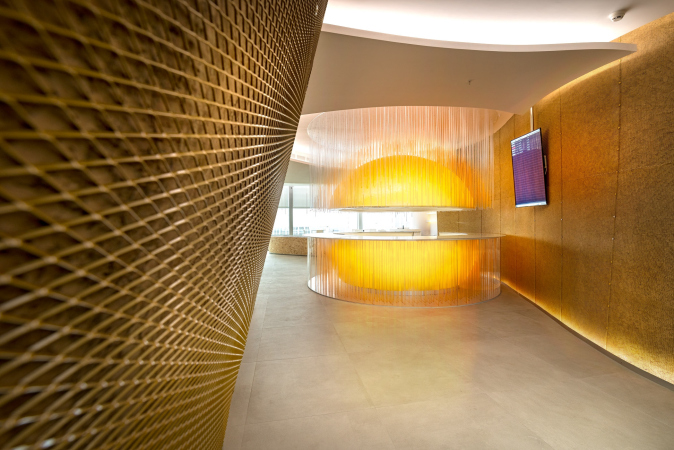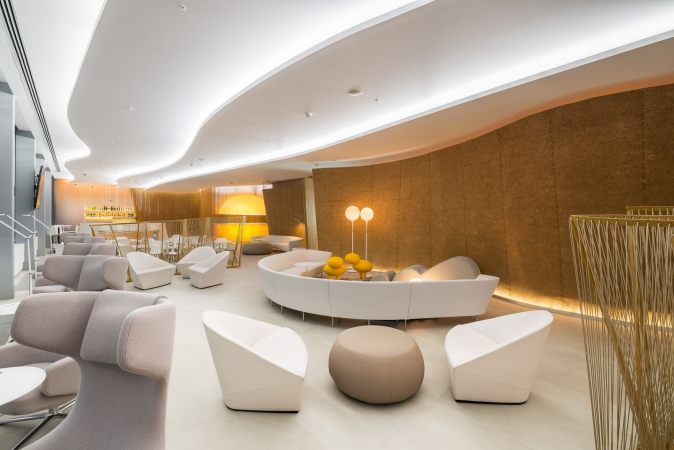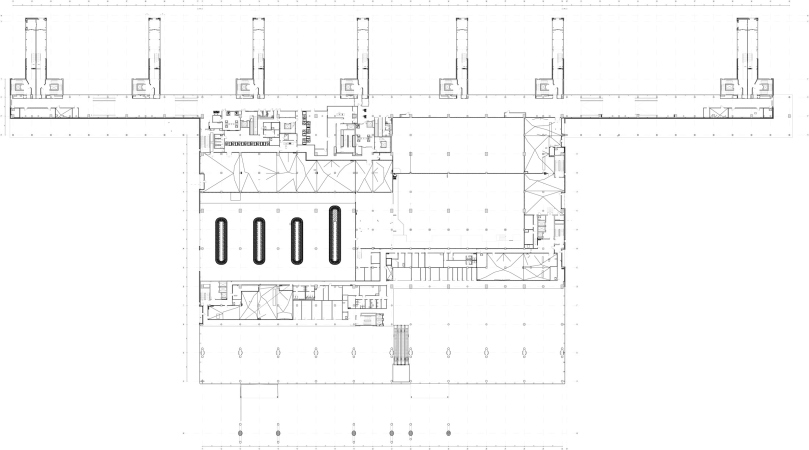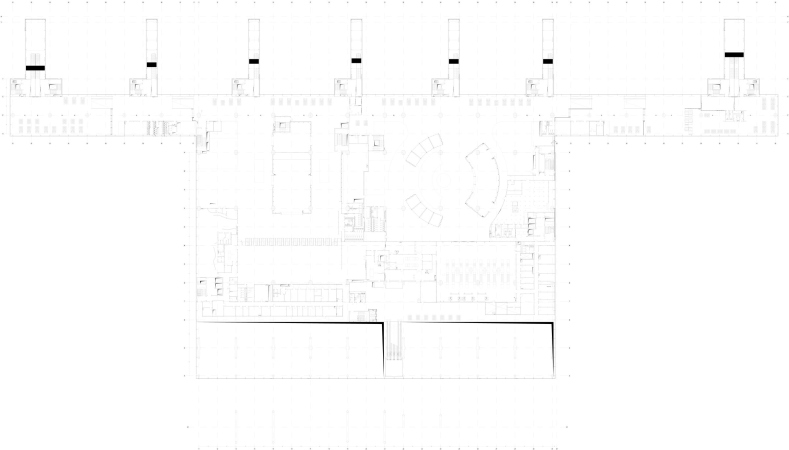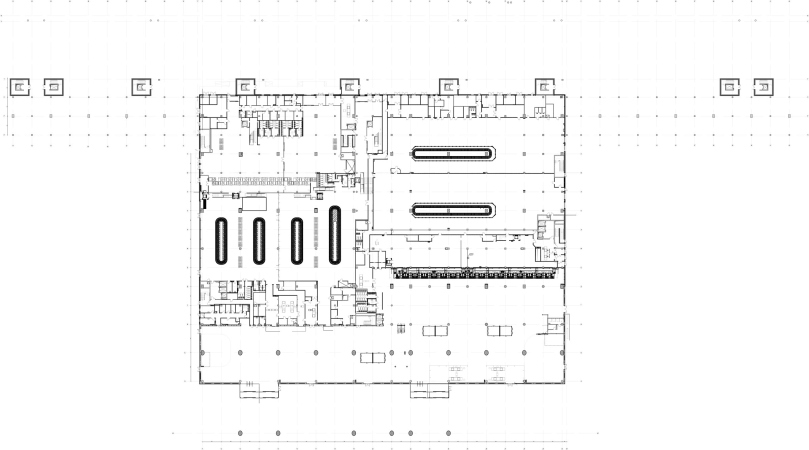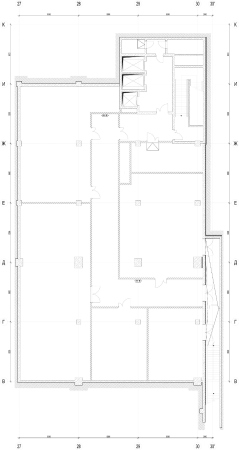Platov Airport, Rostov-on-Don
Copyright: © Twelve Architects
The competition for the project was announced in 2013; before that, Lufthansa helped to choose the land site, considering the prevailing winds and the prospect of building a second runway. The first stage involved 27 contestants; then 11 companies were shortlisted, and eventually the competition was won by the proposal from Twelve Architects & Masterplanners.
The leader of the project, associate director of Twelve Architect, Alex Bitus, shares that, to a certain extent, it was the cheekiness that helped the company’s project win the competition: according to the brief, the airport’s roof was to be completely flat, which essentially meant that what it boiled down to was competing for the best facade. The company took the liberty to override this condition, and justified its approach with the cost estimates that proved that this solution would not lead to cracking up the budget. Ultimately, it turned out that all the other contestants fulfilled the brief to a letter, while the project submitted by Twelve Architects stood out against their background.
The architects considered the future airport to be the “sky bridge” that would connect cities and countries. This idea gave birth to the parabolic arches on the roof, three of which slightly rise and stand out above the square before the terminal, marking the main zones and entrances: arrivals, domestic, and international flights. The arches turned out to be quite a capacious image, and it comes as no surprise that later on other interpretations came about: the local people are more inclined to see the waves of Don in them or maybe the steppe hills.
Platov Airport, Rostov-on-Don
Platov Airport, Rostov-on-Don
The main body of the airport is a simple rectangle with a gallery and boarding sleeves lined up alongside the airfield. The complexity and dynamics are created thanks to the curvilinear roof made of drawn-out aluminum. Approximately in the center of the building, where the middle arch stands out to the plaza, the roof is dissected from end to end by a skylight eight meters wide. It not only fills the airport building with sunlight but also serves as a navigation element because it divides the terminal into the halls of international and domestic flights. The “blind” side facades are essentially the walls of the executive club lounges, still another one situated in the center of the terminal.
Platov Airport, Rostov-on-Don
Platov Airport, Rostov-on-Don
Inside the terminal, the architects wanted to create a cozy and peaceful atmosphere, because, let’s face it, for many people, flying is still a stress. As it turned out, the task was far from simple, considering the fact that you could only use fireproof materials here, the choice of which is pretty limited. The architects achieved the desired results by using the warm shades of decoration, placing tubs with decorative plants, and using various details based on the local environment. For the leaseholderы, they designed small pavilions that look like “Cossack cabins”. Their green roof is as real as can be: the living nolinas are supported by an automated sprinkler system that is integrated into the cabins.
The landscape design project, including the cascading water reservoirs that beautifully reflect the building of the airport, was also done by Twelve Architects. As for the pavement pattern, however, as well as the tree planting pattern, these were prepared by Wowhaus.
Platov Airport, Rostov-on-Don
Platov Airport, Rostov-on-Don
The building of the airport is inscribed into an orthogonal grid consisting of grid 16x16 meters. Construction-wise, and technologically, it has been designed in such a way that you can expand left and right not only the central “processor” box, but also the galleries, increasing the number of the parking places for the airplanes.
Alex Bitus is emphasizing: “This expansion is, of course, possible, but it’s possible from the standpoint of the aviation technology of today. We cannot say exactly what it’s going to be like in 20 or 30 years’ time. The airline technology is changing very rapidly, new technologies and new equipment appear, and so do the new possibilities and new requirements. Everything may change fundamentally during that time. A great example of this is the building of Pulkovo 1 airport, whose reconstruction project we also did last year. This building is soon to be 50 years old, which is not much for a building in general, but we see a huge gap in terms of the state of the airline technologies then and now. Expanding this building is virtually impossible, and the technological processes have been almost fully removed from it because of the incompatibility of the planning solutions and the technological requirements; it is only the boarding function and the business lounges that remained”.
The same practice is demonstrated by the UK: after the reconstruction of the airports built in the 1990’s, the columns, the facades, and the roofs are everything that remains. The architect believes that “essentially, the building of the airport terminal must be a hangar that leaves unlimited possibilities for changing its contents, as required by the advancing technology”.
Platov is designed for a traffic flow of five million passengers a year, yet currently it is not loaded to capacity: the full-fledged development of the airport, and, consequently, its infrastructure, are hindered by the existence of a no-fly zone over Donbass. “Flying around it is very expensive for the European airlines, and ultimately they do not consider this destination as commercially attractive” – Alex Bitus comments.
Platov Airport, Rostov-on-Don
Platov Airport, Rostov-on-Don
The passenger terminal, elevation on grid. Platov Airport, Rostov-on-Don
Platov Airport, Rostov-on-Don
The passenger terminal, elevation on grid. Platov Airport, Rostov-on-Don
Platov Airport, Rostov-on-Don
The passenger terminal, elevation on grid. Platov Airport, Rostov-on-Don
Platov Airport, Rostov-on-Don
The hotel and the regular transportation in the form of a railway line or a monorail track is yet to come, presumably when the airport is finally loaded to capacity, and the regular flights will be full. Alex Bitus is positive that this will inevitably happen in due course, and then logistics hubs will also be built around the airport.

